|
|
|
GowerJonathan Mullard
New Naturalist 99
Collins
2006
"A definitive natural history of the Gower Peninsula, coinciding with its 50th anniversary as an Area of Oustanding Natural Beauty, from its heritage coast and its appeal to the naturalist, to the geology, geomorphology, conservation and ecological history of this diverse area."
|
Buy from amazon.co.uk 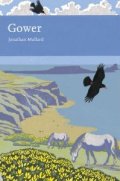
|
|
BumblebeesTed Benton
New Naturalist 98
Collins
2006
"An entirely new addition to the increasingly popular New Naturalist series, and is written by an expert in the field. Ted Benton combines 15 years of his own field studies of the species with all the latest research and findings, to provide a detailed and comprehensive account of the lives of the 25 species of bumblebee found throughout the UK, which includes: acclaimed colour photographs of the sexes and castes of all species; detailed photographs of the bumblebee habitats; detailed key to help aid identification, and original anatomical line drawings; information on identification features, foraging behaviour and distribution; and latest findings on conservation status and habitat requirements."
|
Buy from amazon.co.uk 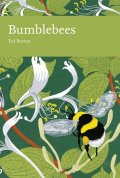
|
|
Mosses and LiverwortsRon Porley & Nick Hodgetts
New Naturalist 97
Collins
2006
"Mosses and liverworts – known as bryophytes – are a group of about 24,000 fairly low-growing plants which have no roots to speak of. Nor do they have flowers, but breed instead by spores. Both are commonly found in damp places, like ditches and beside streams. This authoritative guide explains their ecological importance, how they can act as environmental indicators and their general biology. With full-colour illustrations throughout, it covers: distribution patterns and dispersal mechanisms; their relation with climate; historical uses for mosses; and habitats and emmunities."
|
Buy from amazon.co.uk 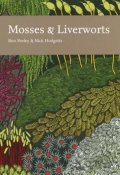
|
|
FungiBrian Spooner and Peter Roberts
New Naturalist 96
Collins
2005
"Exploring the rich variety of mushrooms and toadstools found living in woodlands, grasslands, coastlines, rivers, and man-made habitats such as compost heaps, this New Naturalist volume is packed with information covering virtually every aspect of fungi. There is even a section on fungi in folklore and how humans have used fungi for medicinal purposes. With practical tips on collecting, preserving and identifying fungi, this is an ideal reference guide for enthusiastic amateurs and professionals alike."
|
Buy from amazon.co.uk 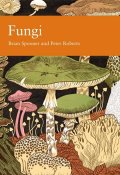
|
|
NorthumberlandAngus Lunn
New Naturalist 95
Collins
2004
"A definitive natural history of Northumberland, from its ecological history, geology and climate to its naturalists and conservation issues. Drawing on his extensive knowledge and experience of the region, Angus Lunn gives a comprehensive account of several types of habitats and geographical areas, including woodlands, the Kielder Forest, moorlands, other inland terrestrial habitats such as montane and limestone habitats and lowland mires, rivers, lakes, reservoirs and ponds, and the coast. The book examines the history and ecology of each of these habitats, and describes the rich variety of flora and fauna to be found living there."
|
Buy from amazon.co.uk 
|
|
SeashoreAngus Lunn
New Naturalist 94
Collins
2004
"A comprehensive, authoritative account of the natural history of the seashore, from earliest times to the present day. In New Naturalist Seashore, Peter Hayward looks at: resident and migrant species, including fish, barnacles, limpets, winkles, sponges, algae, lichens and sea grasses; the effects of tourism and pollution on these habitats; the geology of the British Isles, with its sinking and rising coastlines; and the responses and adaptations of plant and animal life to a changing physical environment."
|
Buy from amazon.co.uk 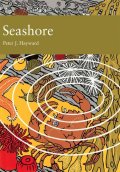
|
|
British BatsJohn Altringham
New Naturalist 93
Collins
2003
"In this book, John Altringham discusses all the different aspects of the natural history of bats, from their origins and evolution to their behaviour, feeding habits and reproduction. He also discusses the threats to the survival of bats, and how we are working to conserve them. Finally, he gives an account of how to watch and study bats in the wild."
|
Buy from amazon.co.uk 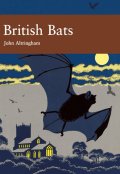
|
|
LakelandDerek Ratcliffe
New Naturalist 92
Collins
2002
"This title aims to tell the story of the whole region from the perspective of its natural history, and from the personal viewpoint of the author. There is an emphasis on the northern half of the region where the author grew up, but this counterbalances the previous "New Naturalist: Lake District", whose authors were better acquainted with the southern half. Through the 12 chapters in the book, Derek Ratcliffe describes the Lakeland climate and geology, key naturalist figures and societies, the nature of the estuaries, coastline and lowlands, the limestone foothills, Lake dales and fells, the Pennines and the Borders. He considers the conservation problems and measures taken, and includes information on organisations such as the National Park Authority, National Trust and non-governmental organisations and on protected areas of various kinds, before assessing the future environmental prospects for the region."
|
Buy from amazon.co.uk 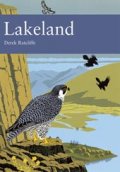
|
|
Nature ConservationPeter Marren
New Naturalist 91
Collins
2002
"The first chapter of this book considers the political and institutional development of nature conservation and reviews the physical and biological nature of Britain, its geology, climate and wildlife habitats. Subsequent chapters cover the loss of habitats and species, how these losses have been managed and the techniques used to survey and monitor the integration of nature conservation policies in industries from agriculture to forestry and fisheries. Marren continues by discussing how nature conservation has emerged from the sidelines to become a major concern. He addresses the role of the media, weighs up the successes and failures of the conservation movement and looks to what the future may hold."
|
Buy from amazon.co.uk 
|
|
MothsMike Majerus
New Naturalist 90
Collins
2002
"Michael Majerus, author of the popular New Naturalist Ladybirds, examines all aspects of moths, from their life histories to their role as pests to humans. He covers their reproduction, feeding, evolution, habitats and conservation. New Naturalist Moths also discusses the enemies of moths, and the ways they have evolved to avoid detection, including camouflage, warning coloration, and mimicry. This is the definitive text for the study of these insects."
|
Buy from amazon.co.uk 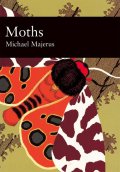
|
|
The BroadsBrian Moss
New Naturalist 89
Collins
2001
"This book discusses the history of the Broads, the waters in the past and the waters now, the people who come into contact with and influence these waterways, and what the future holds for this small but important area of the countryside."
|
Buy from amazon.co.uk 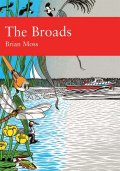
|
|
Loch LomondsideJohn Mitchell
New Naturalist 88
Collins
2001
"This book covers the history of the Loch and its people, forestry, agriculture and fisheries, the natural history, recreational activities, and conservation, past, present and future. It complements other regional volumes in the New Naturalist series which include the Hebrides, Orkney and the Shetland Islands."
|
Buy from amazon.co.uk 
|
|
Amphibians and ReptilesTrevor Beebee and Richard Griffiths
Cover art: Robert Gillmor
New Naturalist 87
Collins
2000
"Building on the solid foundations established by the two earlier New Naturalist volumes on this subject, eminent herpetologists Trevor Beebee and Richard Griffiths have brought together a wealth of new and fascinating information on the British amphibians and reptiles. An introductory chapter looks at the subject of biogeography and how factors such as geological history, latitude and climate affect ecology, life histories and behaviour. The authors then go on to discuss historical interest in amphibians and reptiles, from how they have featured in witchcraft and legends to modern perspectives. A third chapter covers basic biology of amphibians and reptiles, before each of the main groups – newts, frogs and toads, lizards, snakes and chelonians – are examined in further detail. A comprehensive account for each species covers behaviour, life history, reproduction and distribution, as well as ecology and conservation status, areas in which significant discoveries have been made in recent years. There is also a chapter with important new information on the burgeoning number of introduced species in Britain, such as bullfrogs, alpine newts and wall lizards."
|
Buy from amazon.co.uk 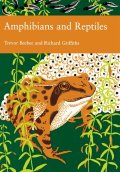
|
|
LichensOliver Gilbert
New Naturalist 86
Collins
2000
"This book discusses all aspects of British lichens, revealing the secrets of their success. The book begins by looking at how lichens have been used throughout history in medicines, dyes, food and perfumes. It then goes on to describe what lichens are, and how they grow and reproduce. A detailed survey is given of the range of habitats in which lichens can be found: on trees, rocks, heaths and moors, chalk and limestone, mountains, rivers, lakes, the coast, walls and buildings, most famously on churches and in churchyards. Gilbert also discusses the susceptibility of lichens to air pollution, and how they can be used to detect environmental pollution."
|
Buy from amazon.co.uk 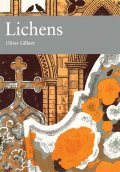
|
|
Plant DiseaseDavid Ingram & Noel Robertson
New Naturalist 85
Collins
1999
"This book covers all aspects of diseases of plants growing in the wild or likely to be encountered on cultivated plants in farm, forest and garden. Many plant diseases have had surprisingly far reaching social and economic effects, so the study of these diseases is of great interest and importance to scientists, horticulturists, agriculturalists and foresters. In Plant Disease: A Natural History, Ingram and Robertson draw on personal observations in the field and laboratory to discuss all types of diseases caused by fungi, from rots and mildews to rusts, smuts and tumours. The symptoms encountered in the wild are described, together with their causes. A final chapter discusses the diseases caused by viruses, bacteria and flowering plants."
|
Buy from amazon.co.uk 
|
|
IrelandDavid Cabot
New Naturalist 84
Collins
1999
"David Cabot, an expert in his field, provides a comprehensive view of all the different types of habitat to be found in Ireland, from the peatlands and fens, to the mountains and uplands; from broad-leaved woodland to coastal zones. The book examines the history and ecology of each of these habitats, and describes the rich variety of flora and fauna to be found living there. In The New Naturalist: Ireland David Cabot also discusses the issue of nature conservation, addressing the history of the conservation movement in Ireland - its successes and failures - and the needs for the future."
|
Buy from amazon.co.uk 
|
|
The Natural History of PollinationMichael Proctor, Peter Yeo & Andrew Lack
New Naturalist 83
Collins
1996
"The Natural History of Pollination describes all the ways in which pollination is brought about: by wind, water, birds, bats and even mice and rats; but principals by a great diversity of insects in an amazing range of ways, some simple, some bizarre. This book is a unique introduction to a complex yet easily accessible subject of great fascination."
|
Buy from amazon.co.uk 
|
|
The New NaturalistsPeter Marren
New Naturalist 82
Collins
1995
Revised edition published in 2005
"A history of the most successful, significant and long-running natural history series in the world. In 1995 Collins published the 82nd volume in the New Naturalist series to coincide with its 50th anniversary. Ten years on, Peter Marren has revised this fascinating account of the series. He covers the illustrious careers of its authors, how each title was conceived and received, and includes plates of the sketches and roughs of the jackets. It also gives behind-the-scenes details of the also-rans and the books-that-never-were. This will appeal to the collector's market - it has a lengthy appendix dedicated to collecting the series with advice on how to spot a good edition, and a star rating according to scarcity - and will mark the 60th anniversary of the publication of the first new naturalist title."
|
Buy from amazon.co.uk 
First edition
Buy from amazon.co.uk
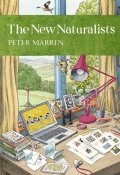
Revised edition
|
|
LadybirdsMichael E.N. Majerus
New Naturalist 81
Collins
1994
"Despite their popularity very little information has previously been published about ladybirds. In this book Michael Majerus redresses the balance, assimilating a wealth of information about these fascinating beetles. He discusses their structure, life histories, food, enemies, habitats, distributions, colours and patterns, genetics and evolution. He sheds light on the phenomenon of cannibalism in ladybirds and the recent discovered of a 'feminist' bacterium that kills eggs destined to produce males, but not those destined to produce females. Finally there is a discussion on the use and potential use of ladybirds as biological control agents, how they are under threat from humans, and what we can do to conserve them."
|
Buy from amazon.co.uk 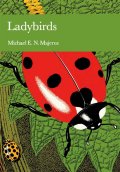
|
|
Wild and Garden PlantsMax Walters
New Naturalist 80
Collins
1993
"The aim of this book is to encourage botanists and gardeners to see their hobby as a common interest, and to throw some light on the origins of the plants found in British gardens. There are chapters on the influence of genetics and environment on the variation of plants; hybridisation and sterility; native and exotic trees; shrubs and shrubberies; herbs, flowers and grasses; and other 'special' life forms such as water plants, carnivorous and parasitic plants. Vegetation today is the product of very complex interaction between man and his environment, and there is a discussion of the roles played by botanists and gardeners in this process. Finally the rise of ecology as a science is described, and the book brings us right up to date with a discussion of late twentieth century attitudes to 'wild nature' and to gardens."
|
Buy from amazon.co.uk 
|
|
Caves and Cave LifePhilip Chapman
New Naturalist 79
Collins
1993
"The study of cave biology is still in its infancy. Speculation and controversy abound, cavernicolous communities remain under-recorded and new species await discovery in most subterranean habitats. But in this book, Philip Chapman has drawn together his expert knowledge of caves and cave life to present an outstanding and cohesive account of what is now known in this extraordinary world, which for so many has remained unknown for so long."
|
Buy from amazon.co.uk 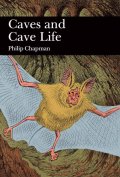
|
|
British Larks, Pipits and WagtailsEric Simms
Collins
New Naturalist 78
1992
"The aim of this book is to review the British larks, pipits and wagtails. There are three broad introductory chapters on their emergence and range and on the chief characteristics of the genera. Single chapters are devoted to eleven separate species, while two cover the rarer migrants or vagrants on the British list. The last two chapters deal with the movements of the major species and the author's personal view of the current future status of these birds in Britain. This book is in the classic mould of New Naturalist volumes, giving a comprehensive description of the biology of an important part of Britain's birdlife."
|
Buy from amazon.co.uk 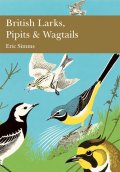
|
|
The SoilB. Davis, B. Walker, A. Fitter, D. Ball
New Naturalist 77
Collins
1992
"Although soil plays a vital role in the functioning of the world, it has often been overlooked, mainly because it contains a huge range of different fields, all of which have become specialities in their own right. This book brings together specialists in these fields to give a broad overview of the staggering advances that have been made since Sir John Russel's The World Of Soil was published in this series in 1947. The first two chapters introduce the physical structure of the soil. The next four chapters deal with the specific animals and plants and how they exploit this environment. The final four chapters describe how these animals interact and how man has used and abused the soil in his striving to gain more and more from this resource."
|
Buy from amazon.co.uk 
|
|
The HebridesJ. M. Boyd & I. L. Boyd
New Naturalist 76
Collins
1990
"In a style at once both readable and informative the Drs. J. M. and I. L. Boyd cover every aspect of the islands. Starting with a clear explanation of the geology, climate and hydrography, they move on to a fascinating description of the many varies habitats, from the sea and inland waters through to woodlands and moor and hill. Part II deals with the characteristics of individual islands and their species, while in part III the islands are discussed in the context of their relation to people - starting with the old naturalists, and ending on a topical note with the current interest in conservation."
|
Buy from amazon.co.uk 
|
|
Freshwater FishP. S. Maitland & R. N. Campbell
New Naturalist 75
Collins
1990
"In this new volume in the New Naturalist series, Dr Peter Maitland and Niall Campbell, who have both spent a lifetime studying and catching fish, take an in-depth look at the fish that inhabit the fresh waters of Britain and Ireland. These include famous members of the salmon family, such as the Atlantic Salmon and the Brown Trout, and the obscure whitefish, species of which are confined to just a few lakes. The information that the authors uncover gives a comprehensive overview of the life cycle of fish, whether mundane spawning or the complex migrations of the Eel and Sea Trout, as well as details on diet, behaviour and ecology. The book also contains the most up to date identification key to both the families and individual species of fish, allowing every species of freshwater fish to be conclusively identified."
|
Buy from amazon.co.uk 
|
|
FernsChristopher N. Page
New Naturalist 74
Collins
1988
"Ferns are ubiquitous on this damp island, but often overlooked, overshadowed by the interest in the technicolour of our flowering plants. This book gives the reader an introduction to the reasons for the variety of ferns in the British Isles, as well as the history of their development within this landscape and their use by man. Taking each major habitat, Dr Page details which species of ferns are most likely to be encountered and why. Using numerous examples, he also shows how some species have become highly adapted to their environment using a whole range of strategies varying from the ordinary to the bizarre."
|
Buy from amazon.co.uk 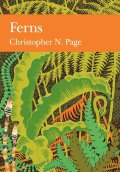
|
|
The New ForestColin R. Tubbs
New Naturalist 73
Collins
1986
"Colins Tubbs provides a detailed insight into how the New Forest landscape was formed and into its distinctive flora and fauna; he traces the fascinating parallel threads of natural and social history. For had it not been for the persistence of a certain style of country living over 100s of years, the royal status, the smallholders and their rights to graze stock, the deer and the famous, free-roaming ponies, the New Forest would not be here today."
|
Buy from amazon.co.uk 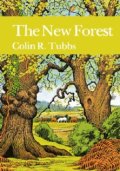
|
|
HeathlandsNigel Webb
New Naturalist 72
Collins
1986
"This is a book to enhance every heathland visit - whether you are a serious naturalist - or simply want to enrich you understanding of the countryside. Nigel Webb may be a leading authority on heathland ecology - but he tells the extraordinary story of how heathlands came to be, the influences of geology, climate, soils and man, and how the plants and animals survive and function - with tremendous clarity and insight. He gives a most rewarding and complete picture of the natural history of lowland heaths which will certainly satisfy the growing need to know and understand the balance of nature - so that we can preserve it for the future."
|
Buy from amazon.co.uk 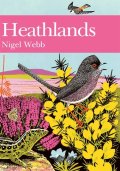
|
|
British WarblersEric Simms
Collins
New Naturalist 71
1985
"To anyone with an awakening interest in ornithology, the warblers may seem a very daunting group. Eric Simms, the author of Woodland Birds and British Thrushes in the New Naturalist series, has a very considerable personal experience of these birds and has produced here a lucid, highly readable, and authoritative study of the group.
With an increasing knowledge of this big, successful family, the naturalist will not only appreciate the wide variety that exists among the warblers, but also come closer to getting to terms with their identification. There are three broad introductory chapters of the warblers of the Old and New World and those of Britain, with several chapters examining, comparing and contrasting members of each genus, and a series of single chapters for each breeding species; these review in detail their characteristics. The author makes use of the latest field discoveries, his own accumulated research and that of many other distinguished ornithologists (there is a bibliography of over 1000 references) to present a detailed picture of the warblers in Britain today. The most comprehensive and accessible review of the popular and intriguing group is fully illustrated with maps, sonagrams, diagrams and photographs. Major features are Ian Wallace's six superb colour plates of warblers' plumages and his expert line drawings which show aspects of morphology and behaviour. Eric Hosking has provided many of his outstanding photographs of different warbler species for the book."
|
Buy from amazon.co.uk 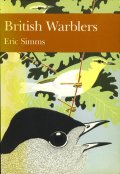
|
|
The Natural History of Orkney R.J. Berry
New Naturalist 70
Collins
1985
"Orkney is a very special place for naturalists. Closer to Oslo than to London, its geography and climate create quite distinct environmental conditions - even though it is only six miles from the Scottish mainland. On these islands of fierce gales, long summer days and long winter nights, the wildlife has adapted in intriguing ways… Starlings adapt to ground-nesting…local sheep eat seaweed…and there are voles exclusive to Orkney. Here is one of the very few areas where the rare and delicate Scottish Primrose thrives…where you find the British stronghold of the Hen Harrier, and vast colonies of seabirds and seals.
This is the first - and long-needed - survey of the islands' natural history, complete in one volume. Because Orkney is exceptional, it is vital reading for the serious naturalist, as well as for being a comprehensive and absorbing guide for every visitor. In his tracing of the island's evolution from its geological creation to the effects of oil technology; in the detailed, yet fascinating exploration of the plants and animals (and where best to see them), Professor Berry's expertise and enthusiasm is backed by that of local specialists, and Orkney's long tradition of natural history study. Appendices include definitive lists of all the species of flora and fauna on record, and an extensive bibliography."
|
Buy from amazon.co.uk 
|
|
Reptiles and Amphibians in BritainDeryk Frazer
Collins
New Naturalist 69
1983
"Dr Frazer describes all those species of reptiles and amphibians native to Britain and others, once alien to our islands, which have been introduced. He makes use of the latest field discoveries, his own accumulated research and that of many other distinguished herpetologies, to present a detailed picture of reptile and amphibian ecology in Britain. An introductory first chapter deals with anatomy and physiology of herptiles and their evolution, ending with a brief look at the way in which their ecology may be studied. Succeeding chapters each give details of particular families and their species: frogs and toads, newts, lizards, snakes and chelonians. A final chapter discusses conservation of herptiles in Britain, especially of those species which are in danger."
|
Buy from amazon.co.uk 
|
|
Mammals in the British IslesL. Harrison Matthews
Collins
New Naturalist 68
1982
"This new book by Dr Harrison Matthews will be warmly welcomed by all those for whom his British Mammals, in this series, was a standard work for nearly 30 years. In recent years our understanding of the British species has expanded greatly. This new volume offers a synthesis of modern knowledge derived from living animals studied in the field and covering all facets of mammalian life in the British Isles. It will be as important to a new generation of naturalists as the previous book was to an older one. The book is full of fascinating detail - of the shrews which scream in defence of territory to avoid fighting; of young rats that play to learn while adult otters play for fun; of vole 'plague' populations which crash as a result of stress; of monogamy and parental care of the dog fox - but it also paints a broader picture of interdependence, conservation and the part played by man."
|
Buy from amazon.co.uk 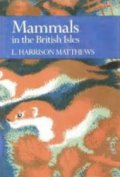
|
|
Farming and WildlifeKenneth Mellanby
Collins
New Naturalist 67
1982
"This timely and provocative book argues forcefully that wild species are, in fact, beneficial to the land as a whole: without them its productivity will fall and farming will inevitably suffer. The main changes in farming practice and their environmental effects are dealt with systematically. Successive chapters discuss arable cropping, grassland management, animal husbandry, hedgerow removal, land drainage and the use of pesticides. Considered also are the care of the soil and its inhabitants - important and often overlooked forms of wildlife - possible damage to livestock by diseases of wild animals, and the effects of hunting and shooting. Professor Mellanby writes throughout with an understanding of the problems of both farmers and conservationists. This is a most persuasive account of why they should now work together to preserve the countryside's fauna and flora."
|
Buy from amazon.co.uk 
|
|
The Natural History of WalesWilliam M. Condry
Collins
New Naturalist 66
1982
"This book is an attempt to survey the natural history of the whole of Wales. It therefore covers such areas as Snowdonia and the Brecon Beacons as well as the spectacularly beautiful Pembrokeshire coast and the less well-known but no less interesting areas of mid-Wales. Describing each kind of terrain in turn, William Condry has explored and surveyed the face of this unique land as few others have done. Beginning with corries, crags and summits, he goes on to consider moorlands, mires and conifers. There then follow rivers, lakes and marshes; the native woodlands; limestone flora; farmlands, villages and estates; the industrial scene; and finally perhaps the most striking terrain of all, the coast. This encompasses polders, peatlands, beaches, dunes and estuaries as well as cliffs, headlands and island."
|
Buy from amazon.co.uk 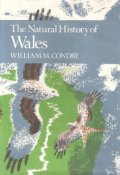
|
|
WadersW.G. Hale
Collins
New Naturalist 65
1980
"A great deal is known of their biology in winter, but waders in summer have been studied far less. This account by Professor W. G. Hale attempts to describe their biology throughout the year, drawing where necessary on information from abroad. The book thus discusses all aspects of the life of the waders - habitats, distribution, variation, breeding biology, migration, wintering, roosting, moulting, feeding, evolution, and conservation. As the author points out, it is essential that we learn more about waders in order to ensure that our passage migrants and winter waders continue to visit the British Isles."
|
Buy from amazon.co.uk 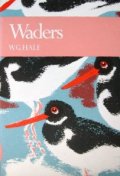
|
|
The Natural History of ShetlandR.J. Berry and J.L. Johnston
New Naturalist 64
Collins
1980
"The Natural History of Shetland includes chapters on geological history, human history, vegetation, the sea and its creatures, freshwater life, land animals and birds, supplemented by checklists on the better-recorded groups of species. It should be invaluable to all those concerned with the impact of North Sea oil and its related industries on Shetland. The publishers would like to thank British Petroleum for providing a grant towards the publication of the book."
|
Buy from amazon.co.uk 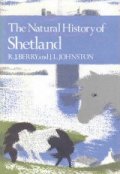
|
|
British ThrushesEric Simms
Collins
New Naturalist 63
1978
"There are six true species of thrush breeding in the British Isles: Blackbird, Song Thrush, Mistle Thrush, Fieldfare, Redwing and Ring Ouzel. It is to these that the major part of the book is devoted. The author deals with each species in turn, describing fully its general biology and ecology. There is then a discussion of various aspects of the natural history of the genus as a whole which, while presenting a very full picture of the lives of these fascinating birds, also succeeds in highlighting and discussing some of the most important current problems of avian biology. There is a chapter on Britain's vagrant thrushes and, finally, a substantial chapter on the seven species of small, chat-like thrushes of the British Isles - including such well -loved birds as the Nightingale and the Robin. All native species, and many of the vagrants, are illustrated in the black-and-white plates. The wealth of maps, diagrams and other text figures attests to the depth of Eric Simm's research."
|
Buy from amazon.co.uk 
|
|
British TitsChristopher Perrins
Collins
New Naturalist 62
1979
"Curiously, little has been written about tits for the general naturalist. In this book, Christopher Perrins, who succeeded the late David Lack at the Edward Grey Institute of Ornithology in Oxford, sets out to remedy this omission. Dr Perrins has spent many years studying these small birds in great detail and has himself made many important discoveries about their lives and behaviour. The book deals with seven species of tit. These include the six members of the true tits - Coal, Great, Blue, Crested, Marsh and Willow Tits - as well as the more distantly related Long-tailed Tit. In addition to dealing with the general biology and behaviour of the birds, Dr Perrins gives full attention to such things as their social lives, their intelligence and adaptiveness, and their puzzling ability to adjust their population sizes to the future availability of food. Dr Perrin's study demonstrates that there is much unsuspected complexity - some of it still not clearly understood - in the lives of even the most popular of groups of birds; as such it will be of interest to every birdwatcher, amateur and professional alike."
|
Buy from amazon.co.uk 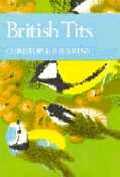
|
|
Inheritance and Natural HistoryR.J. Berry
Collins
New Naturalist 61
1977
"This absorbing book is about genetics as it applies to the world around us. Its main aim is to show the ways in which inherited variation can help to explain the properties of natural populations: the differences between individuals, the extent and mechanism for transmitting characteristics from one generation to another, and the factors which control the frequency of a trait in a local group. It is thus of interest not only to naturalists but also to farmers and gardeners - indeed it is highly relevant to each one of us in the context of modern social planning."
|
Buy from amazon.co.uk 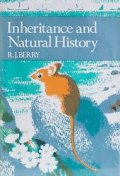
|
|
British Birds of PreyL.H. Brown
Collins
New Naturalist 60
1977
"Leslie Brown's account of our 15 resident, 7 vagrant and 2 migrant species of eagles, falcons, hawks and vultures in Britain presents a great mass of scientific information about these birds in a manner as attractive to the general reader as to the dedicated ornithologist. Each of the resident species is discussed in detail - its status, past and present; its feeding and hunting behaviour; its life history; its breeding behaviour; migration and the threats to its survival. Then the biology of the birds of prey, changes in their habitat and status, their food habits, breeding behaviour, their territories and populations are examined in depth in separate chapters."
|
Buy from amazon.co.uk 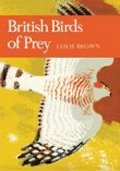
|
|
AntsM.V. Brian
Collins
New Naturalist 59
1977
"In this book Dr Brian, the country's leading authority on ants, brings together the results of recent research (much of it his own) into the zoology, ecology and social life of the group. Dr Brian begins by discussing the relationship of ants to other insects, their anatomy and physiology, and then turns to the different species of British ant (with an identification key), feeding, including aphid 'farming' and the specialised role of the workers in acting as travelling food containers for the nest itself, the rearing of the young and the different caste systems (including the life history of the queen), the ecological significance of ants, and the role they play in the lives of other animals. Particular attention is paid to the importance of communication in the ant society, and there is a complete section of distribution maps - one for each of the 47 British Species - compiled according to the latest available data."
|
Buy from amazon.co.uk 
|
|
HedgesE. Pollard, M. D. Hooper and N. W. Moore
Collins
New Naturalist 58
1974
|
Buy from amazon.co.uk 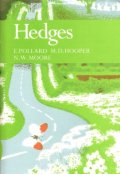
|
|
British SealsH.R. Hewer
Collins
New Naturalist 57
1974
"Based on extensive field observations, this thoroughly illustrated volume in The New Naturalist Series is one of the most authoritative studies of its kind. The late Professor Hewer shows how recent discoveries for determining the age of seals have greatly contributed to research in the subject and he presents a comprehensive account of the seal's migratory patterns, methods of hunting for food, movements and patterns of reproduction. As the large colonies of seals indigenous to British waters constitute and important segment of the world's seal population, Professor Hewer's findings will be helpful to all interested in seal behaviour, and conservation."
|
Buy from amazon.co.uk 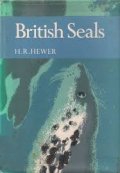
|
|
Pedigree: Words from NatureStephen Potter & Laurens Sargent
Collins
New Naturalist 56
1973
"Pedigree traces the origins of speech itself and the evolution of language, particularly English which, based on several dozen different languages, has by far the richest vocabulary of all modern languages. This richness is reflected in the varied bases of the names of plants, birds and animals. There are plants named according to their characteristics; animals according to their movements, habits, physique and colour; and birds according to their songs, sex, scent and size. Conversely, much of our daily vocabulary incorporates words from nature, both obvious - porcupine (see page169) and not so obvious - London cab (see page 243); from the names and characteristics of animals familiar, and legendary; from primitive agriculture, astrology and astronomy, from seafaring and hunting. There are measurements derived from anatomy, diseases from astrology and remedies from plants."
|
Buy from amazon.co.uk 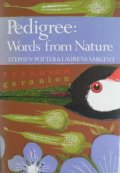
|
|
FinchesIan Newton
Collins
New Naturalist 55
1972
"This illustrated survey of finch behaviour is a thorough, non-technical account of the habits of these birds throughout the world. Dr. Newton uses his extensive bird-watching experience and knowledge of the published literature to document the main patterns of feeding, development of feathers, breeding, and migration. As a result, he presents the changing relationship of the birds to their environment."
|
Buy from amazon.co.uk 
|
|
The Pollination Of FlowerssMichael Proctor & Peter Yeo
Collins
New Naturalist 54
1972
"The role of insects in pollinating flowers is today a commonplace - so that it is easy to forget that its discovery is little older than the invention of the steam engine: before that, we imagined that the concern of bees with flowers was simply a matter of collecting honey. But the methods by which pollen grains reach a stigma, enabling fertilization and seed production to take place, include some of the most varied and fascinating mechanisms in the whole world of living things. This book, an important addition to the New Naturalist series and to scientific literature, is a clear and thorough account of all the ways in which pollination is effected - by wine, water, even bats; but principals, in many curious ways, by diversity of insect species."
|
Buy from amazon.co.uk 
|
|
The Lake DistrictW. H. Pearsall & W. Pennington
Collins
New Naturalist 53
1972
"This book covers the natural and human history of the both the Lake District National Park and adjoining areas - their landscape, geology and glaciation; the bird, fish, insect and invertebrate fauna of lakes and tarns; the flora and fauna of becks and rivers; climate; soil and soil history; the ecology of woodlands, mountains, and fells and dales - the three main types of Lakeland habitat. The human history of the Lake District is traced from pre-history through the centuries to the present day, on the evidence of the archaeologist, the historian and the conservationist."
|
Buy from amazon.co.uk 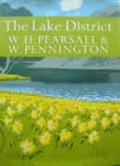
|
|
Woodland BirdsEric Simms
Collins
New Naturalist 52
1971
"This new study of British woodlands – both coniferous and broadleaved, natural and planted – and their varied bird life is perhaps one of the most engaging books to appear in this series. Mr. Simms first considers the general environment of trees – the background to any study of woodland birds – and the origins and history of the British and Irish woodlands and their birds from Pliocene times to the present day. He then considers the nature of a ‘woodland bird'; the bird communities supported by the most important tree species; types of woodland or marginal habitats; problems of woodland bird populations and changing environment; the role of woodland bird song and the place of birds in modern forestry. He concludes with an invaluable species-by-species account of British woodland birds, giving details, for each, of its British and European distribution and of its status and habitats within the British Isles. It is a book of absorbing interest to bird-watchers throughout the country."
|
Buy from amazon.co.uk 
|
|
Man and BirdsRonald Keir Murton
Collins
New Naturalist 51
1971
"Here is a fascinating and authoritative survey of the complex interrelationships of bird and human life in this country. Dr. Murton begins with an entire outline of the earliest evidence of the impact of birds on man, and vice versa and of the ecological considerations involved. He then proceeds to describe in detail how men and birds affect each other in these islands - in food production, farming, forestry, horticulture, fishery, urban conditions and hygiene, sport and industry. He concludes with an account of the conservation issues involved - the need to preserve unique habitats and to protect bird life, beside the demands of crop protection and control of 'problem birds'. It is a book which anyone interest in either our birds or our environment will find of absorbing interest."
|
Buy from amazon.co.uk 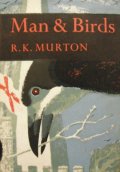
|
|
Pesticides and PollutionKenneth Mellanby
Collins
New Naturalist 50
1967
"From an objective and scientific standpoint, Dr. Mellanby examines the problems of pollution of air, land, river, and the sea, by herbicides, pesticides, sewage, industrial effluents, gases, radiation, leakages, over-drainage, mistakes and mismanagement, in Britain to-day. He sets out to placate neither farmers nor naturalists, but to explain in each case what is happening, to point to both dangers and practical necessities, and to discuss what steps should be taken.."
|
Buy from amazon.co.uk 
|
|